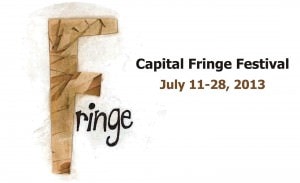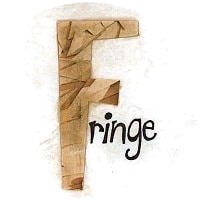More than 100,000 people have no earthly need for what follows, and you know who you are: You’re this year’s happy horde of audience members in DC’s most vibrant, creative, and unconventional culture fest. Yeah, really, stop reading now; you already know what makes Capital Fringe hip and cool.
Everyone else, nota bene. That’s Italian for where the heck have you been? (Okay, I just made that up. But all the rest here is true).
1. Capital Fringe is just the ticket for DC’s surging population of 20- and 30-somethings. This demo now makes up nearly a third of the District’s population and accounted for almost all the District’s growth in the last decade. This insurgent generation has come to town for day jobs, they want fun places to hang out at night, and they’re on a budget. Capital Fringe caters to this discerning crowd like nobody’s business—and oldsters who make grants, policy, and real-estate deals need to take care not to screw it up.
2. Capital Fringe is a model of volunteerism in the private sector. Remember “1,000 points of light”? It’s still around, what Bush senior dubbed his national work-for-nothing-for-the-greater-good initiative to “keep America moving forward, always forward—for a better America, for an endless enduring dream.” Wanna see that illustrious legacy in action? Check out the 400-plus volunteers who each year flock to Capital Fringe and work their butts off. And that’s not counting all the unpaid casts and production crews. Civic mothers and fathers: Don’t mess with this unselfishness. Point to it with pride.
3. Capital Fringe is of the people, by the people, and for the people. That’s what the United States is alleged to be, but Capital Fringe actually is. The whole shebang is unjuried, meaning anyone who wants to play can play; first come, first in; no grand high poobah chooses. There is astute curation, however, and it’s crowd-sourced. Once word-of-mouth buzz begins and reviewers weigh in, some shows start selling out, and then, when the runs are all over, there’s a people’s-choice competition online that picks the best of the fest. Here in America’s hometown, is there an entity or enterprise that does democracy any better?
4. Capital Fringe protects performing arts from capital. In the U.S., live theater and economics are at best a marriage of convenience. America has no subsidy for live theater comparable to that of, say, Germany or the UK. Consequently artistic decisions in big theater-production companies often get driven by investors and funders who, no matter how well-intentioned, could probably not direct a scene or design a set. Capital Fringe offers a respite, a kind of free-form farmers market in which to proffer fresh-grown produce without big-box retail overhead and genetically modified fiscal taste. This does the District good.
5. Capital Fringe brazenly blends and blurs high brow and low brow. And that’s a good thing. Just ask Shakespeare or Aristophanes. The economic stratification of America has had devastating consequences—a point activists made eloquently on behalf of the 99 percent. Related yet not much noted is the divide that has been driven between elite and mass culture, a trend totally counter to the origins and intrinsic worth of theater. Meanwhile Capital Fringe does populist alongside proper, lewd alongside lyrical, burlesque alongside belletristic. It’s an inspired mashup—and thereby more faithful to theater’s past than what a well-heeled subscription audience is likely to view on a vast proscenium stage. Here in DC where more history is enshrined per square mile than anyplace else in America, let’s remember that people’s history is only alive if it’s allowed to live free. And that goes for the people’s living theater too.
Here are my Fringe Reviews:
1814! The War of 1812 Rock Opera
Bully
Disco Jesus and the Apostles of Funk
RFK
Check out MAGIC TIME!
Check out DCMetroTheaterArts’ Capital Fringe Reviews and Preview Articles.









A compelling description from a great perspective. Send it to the Washingtonian! Nice to have met you.